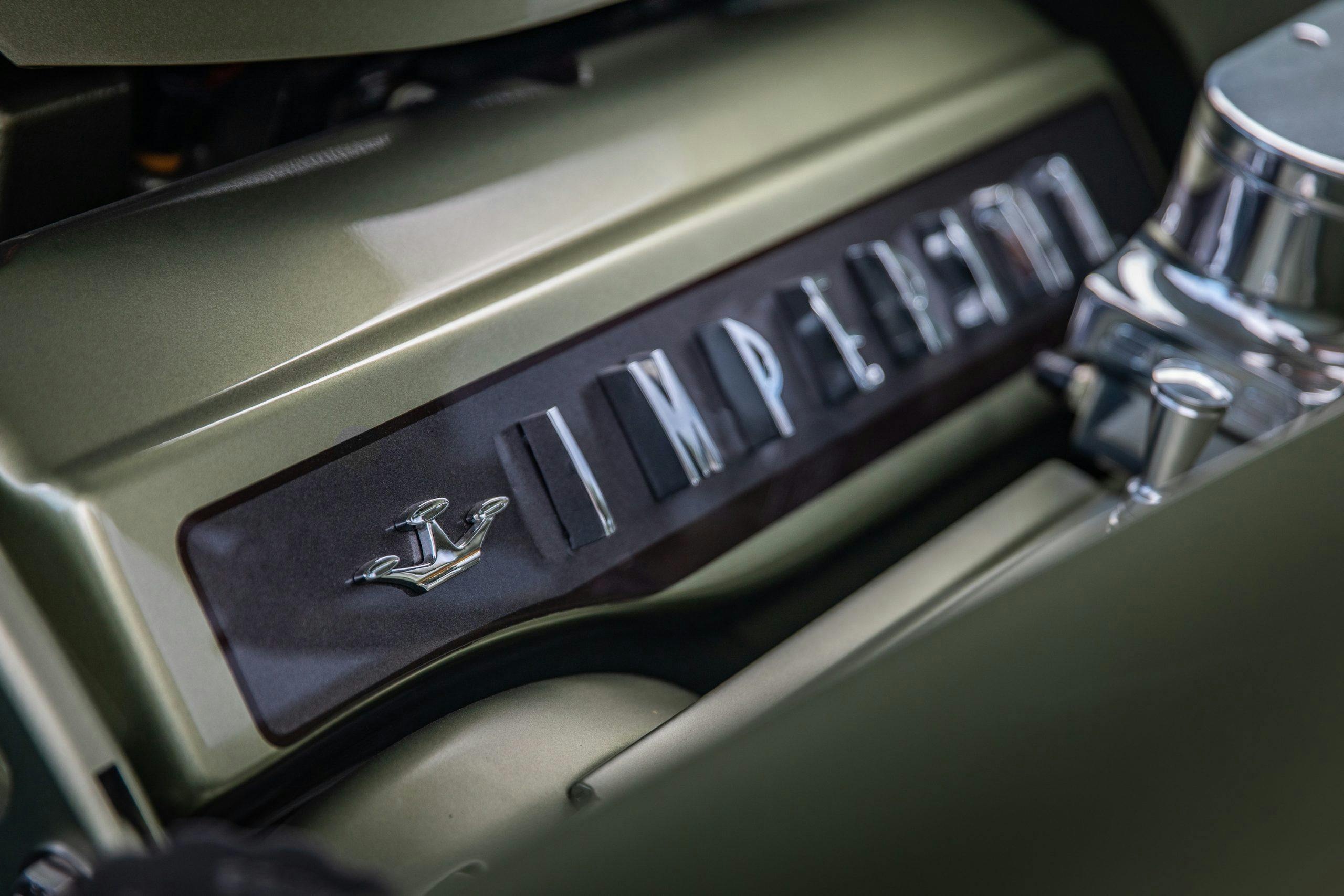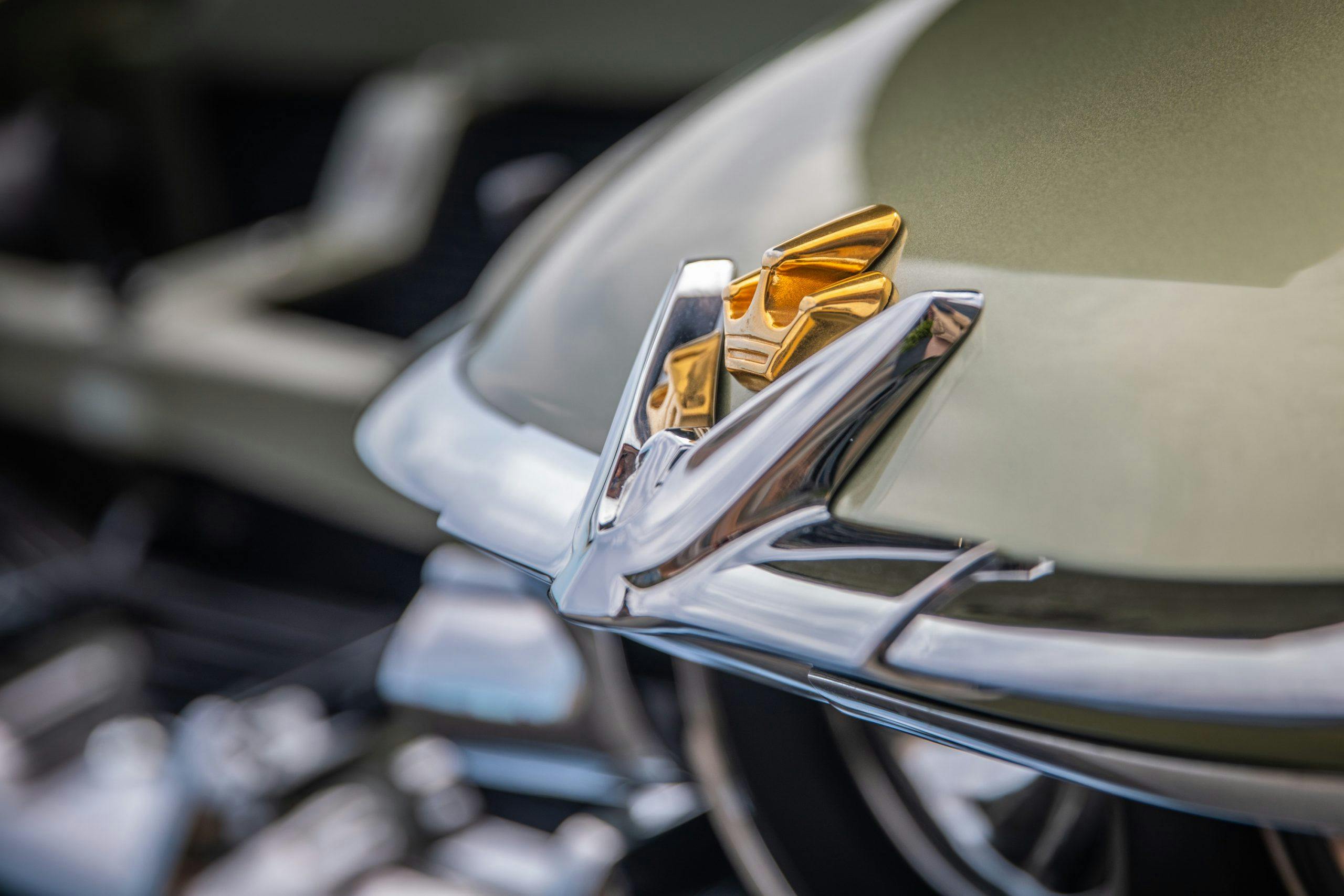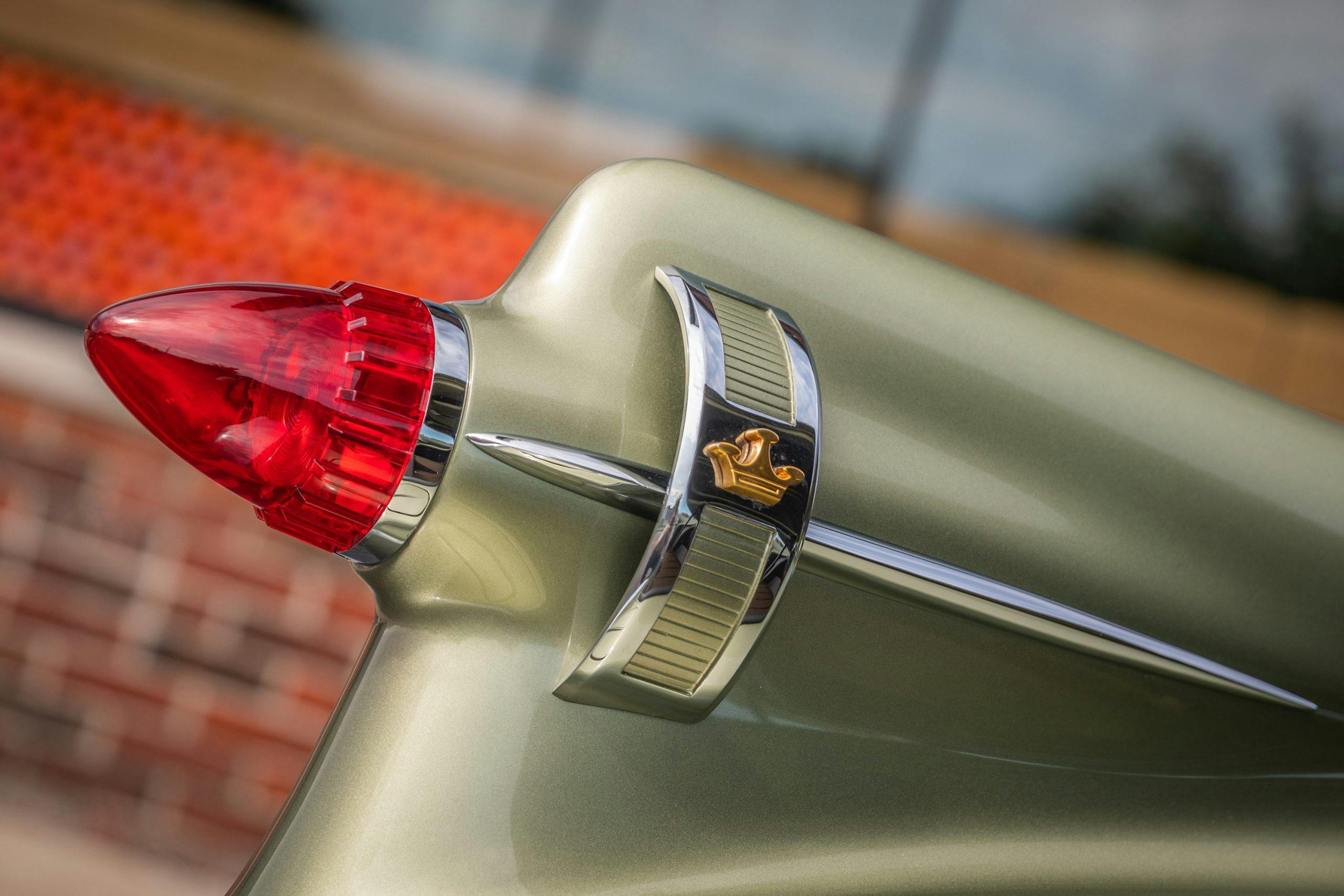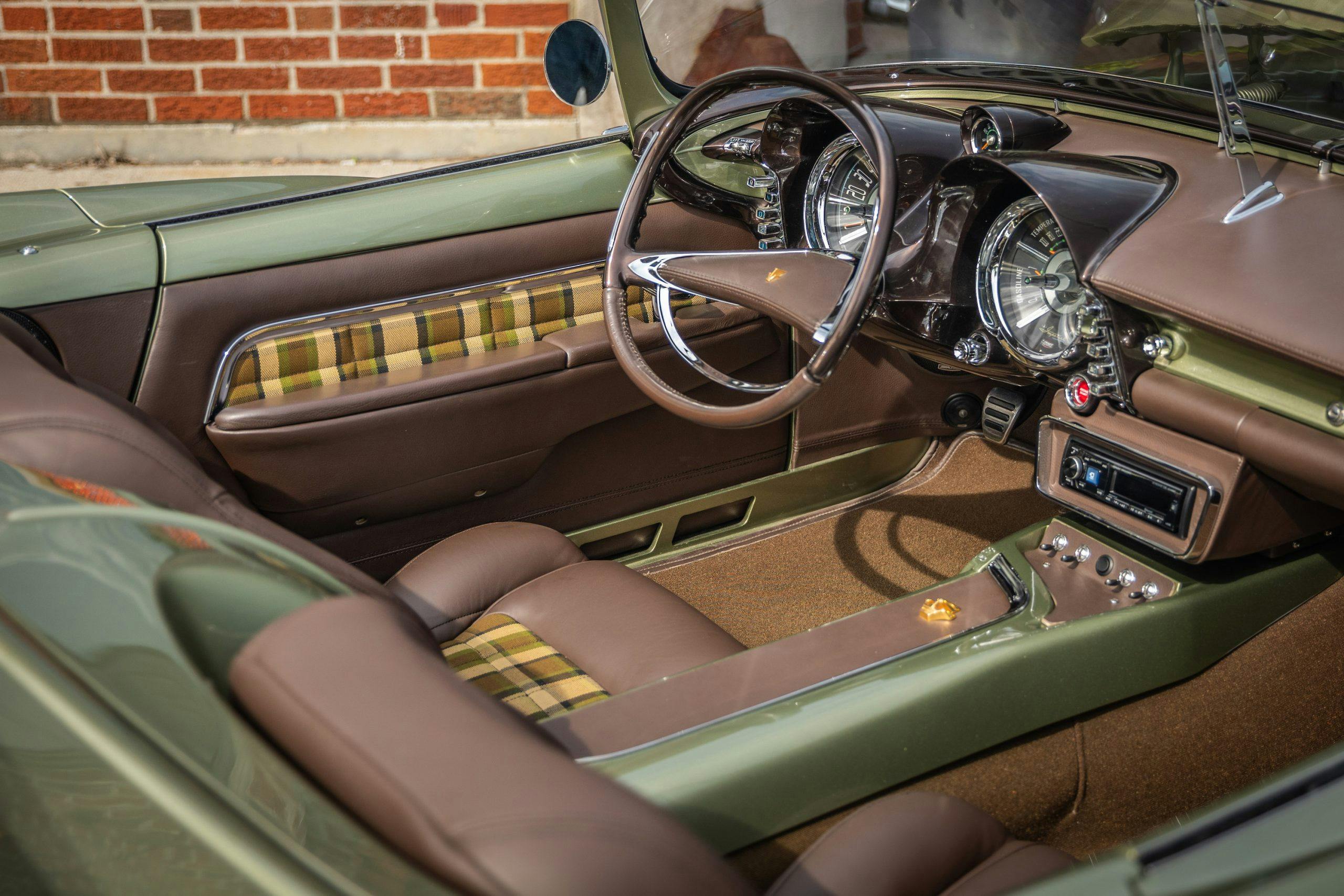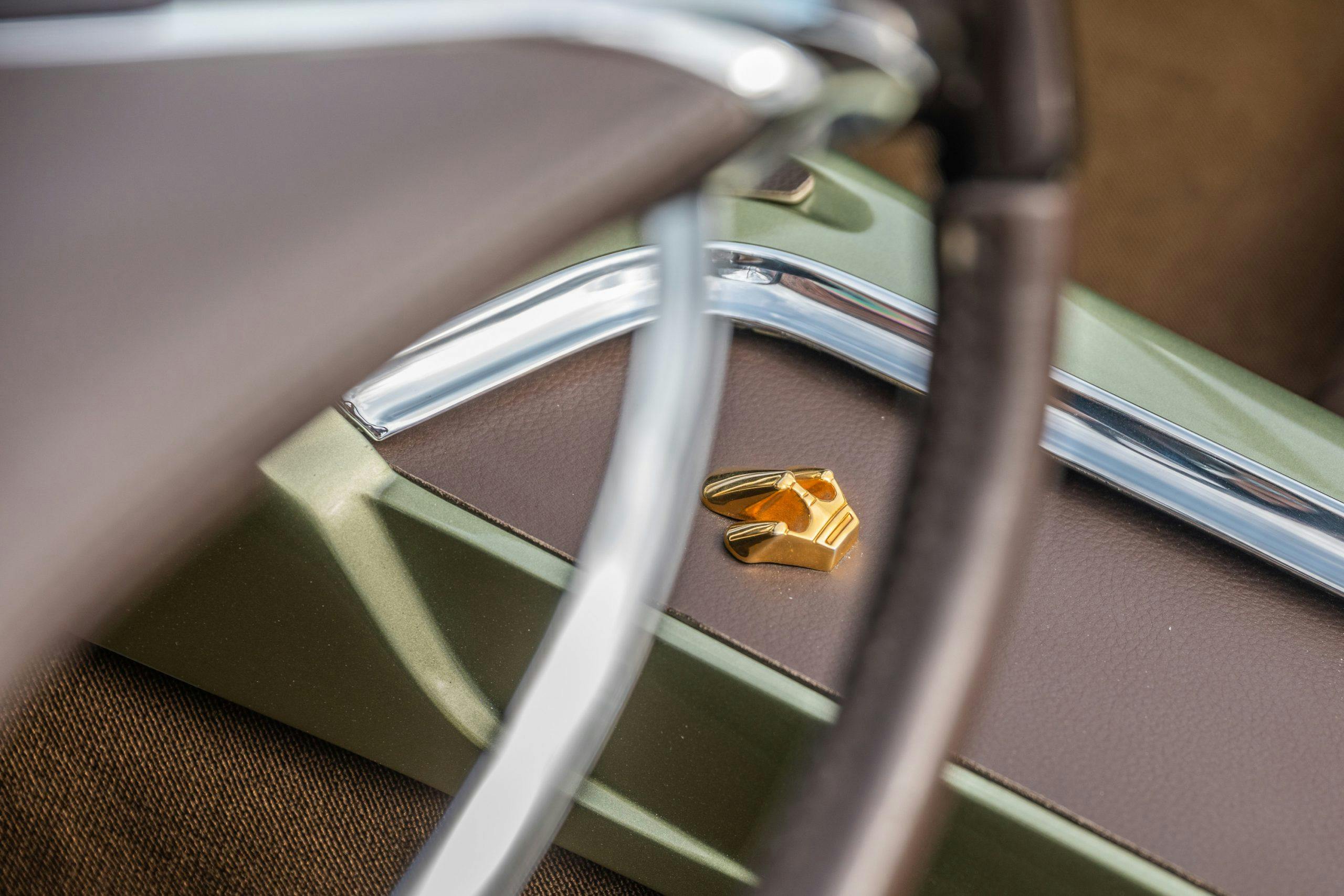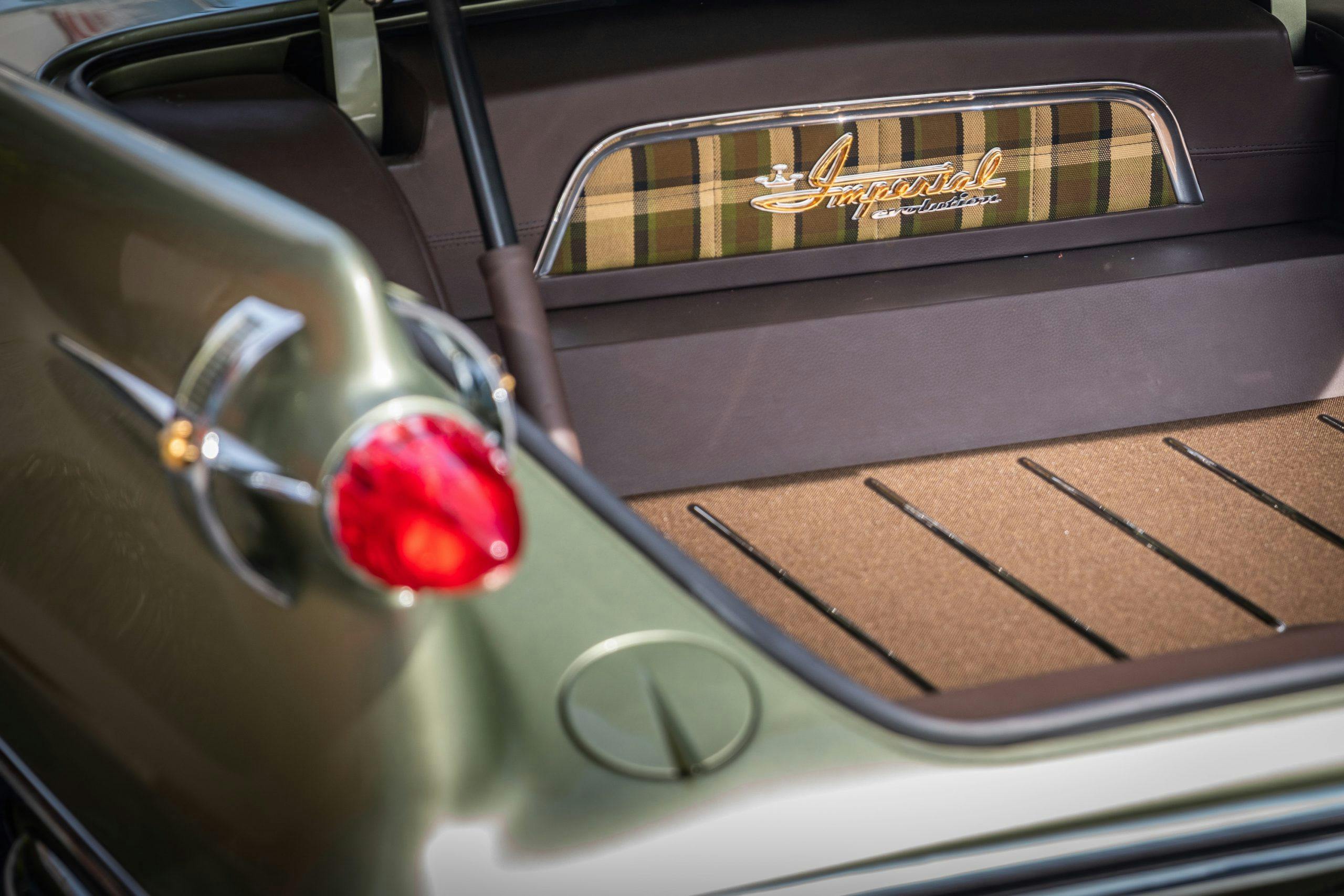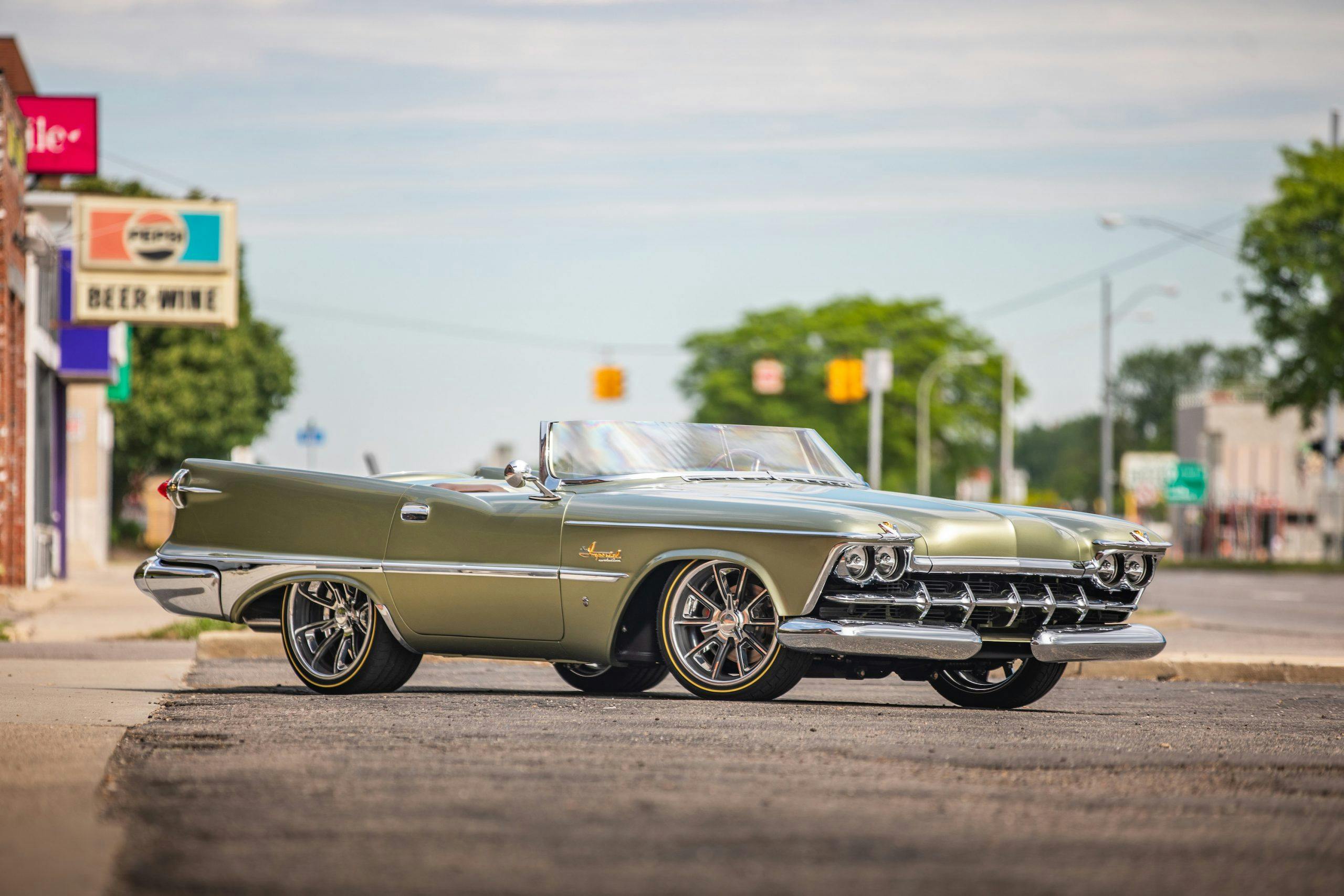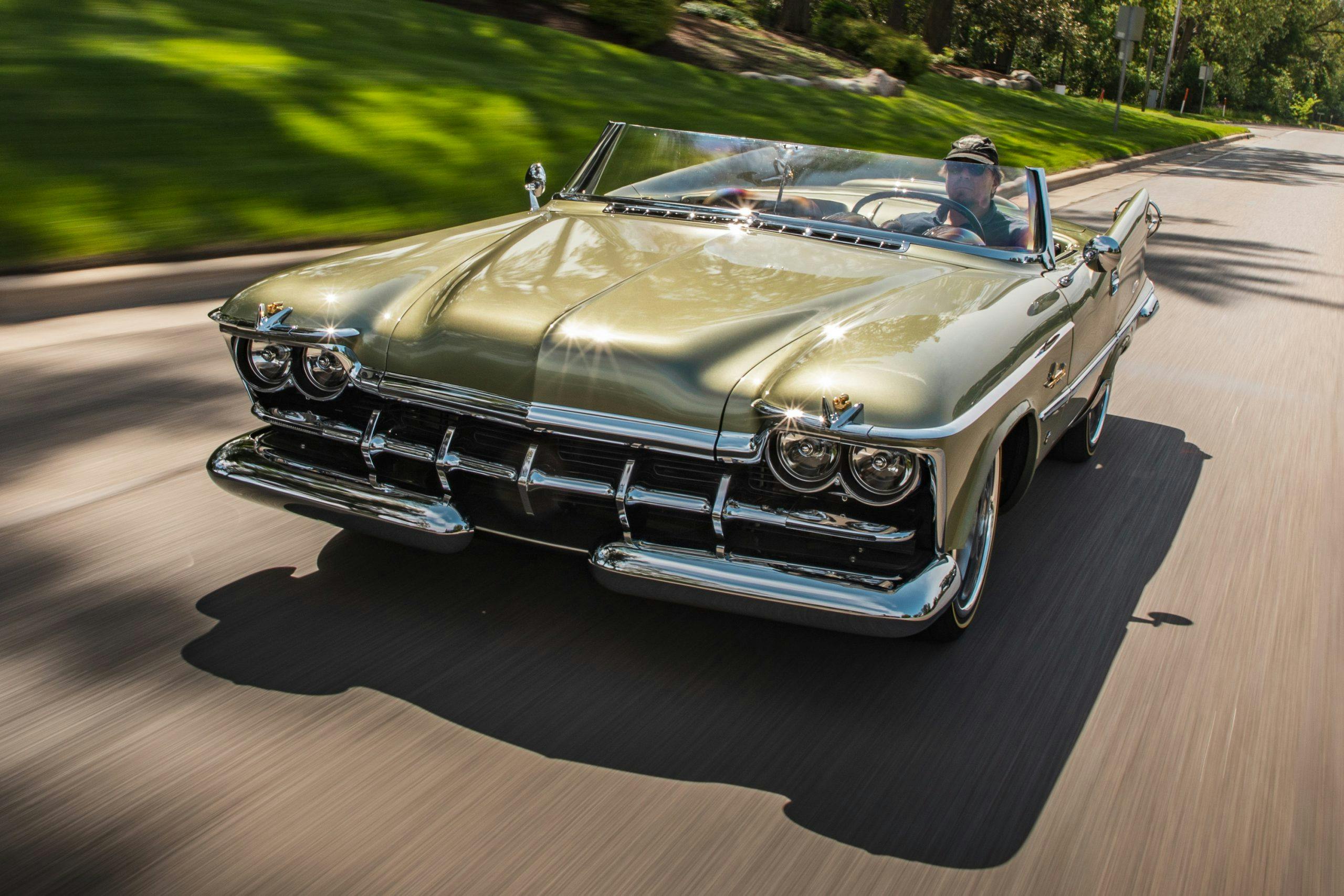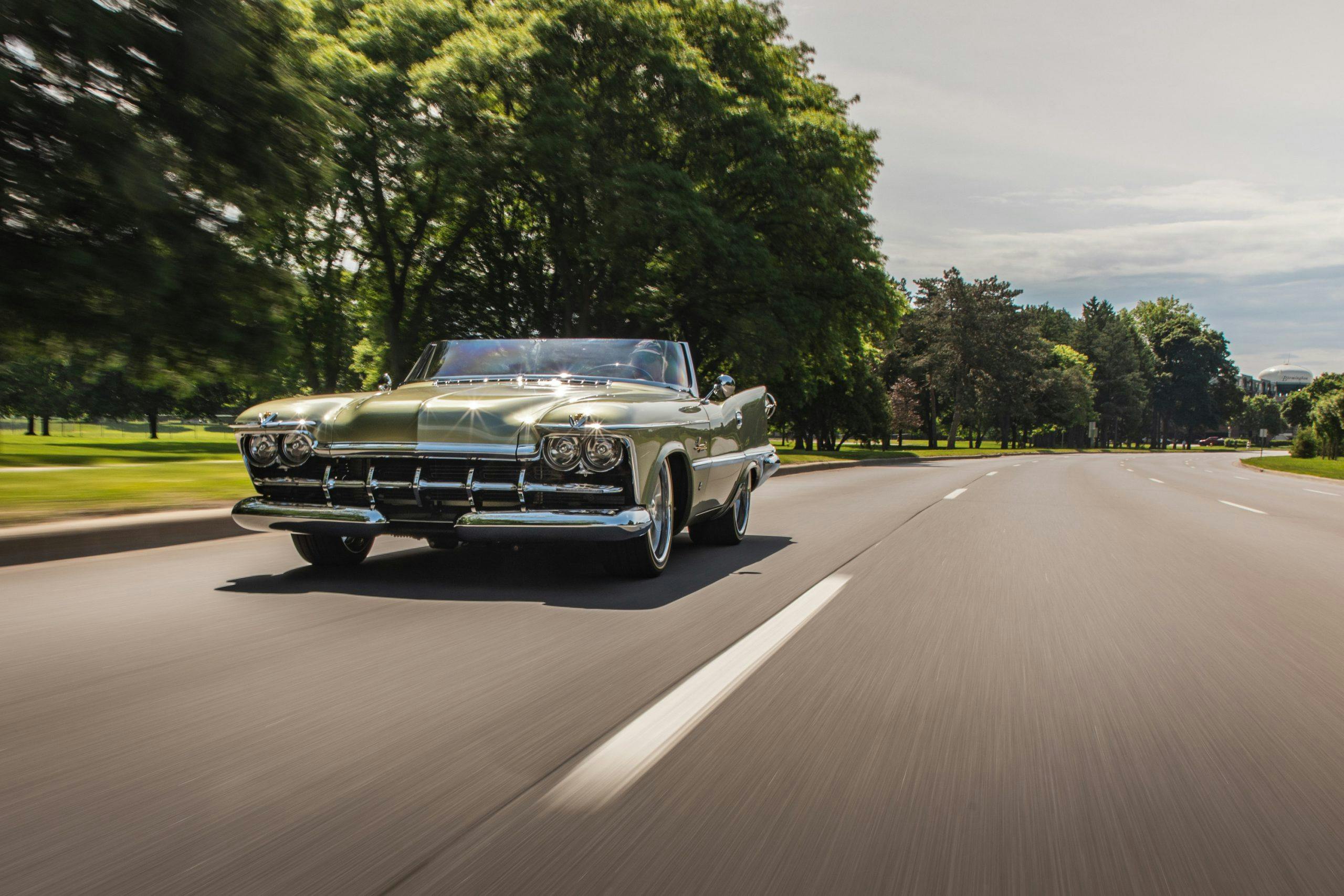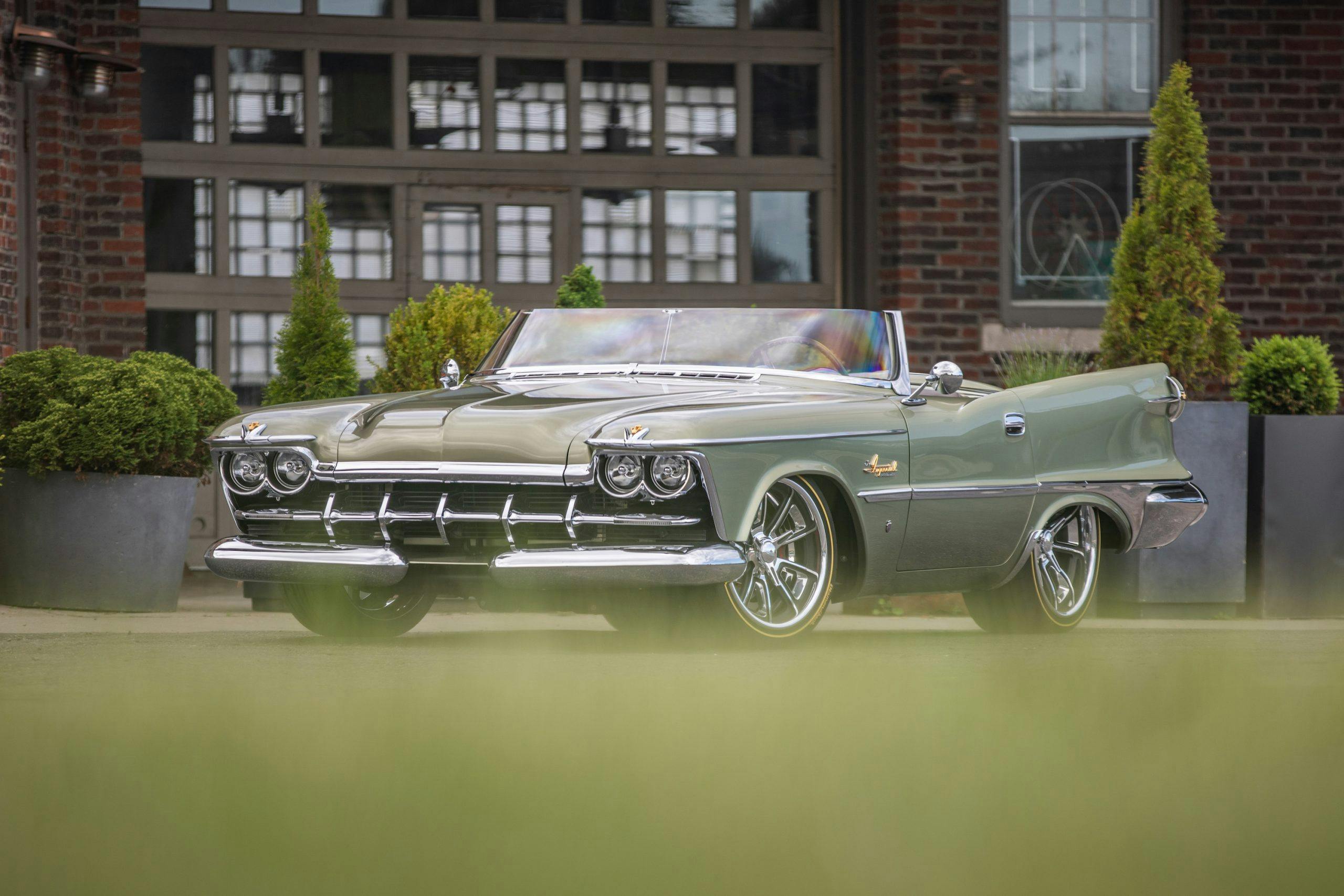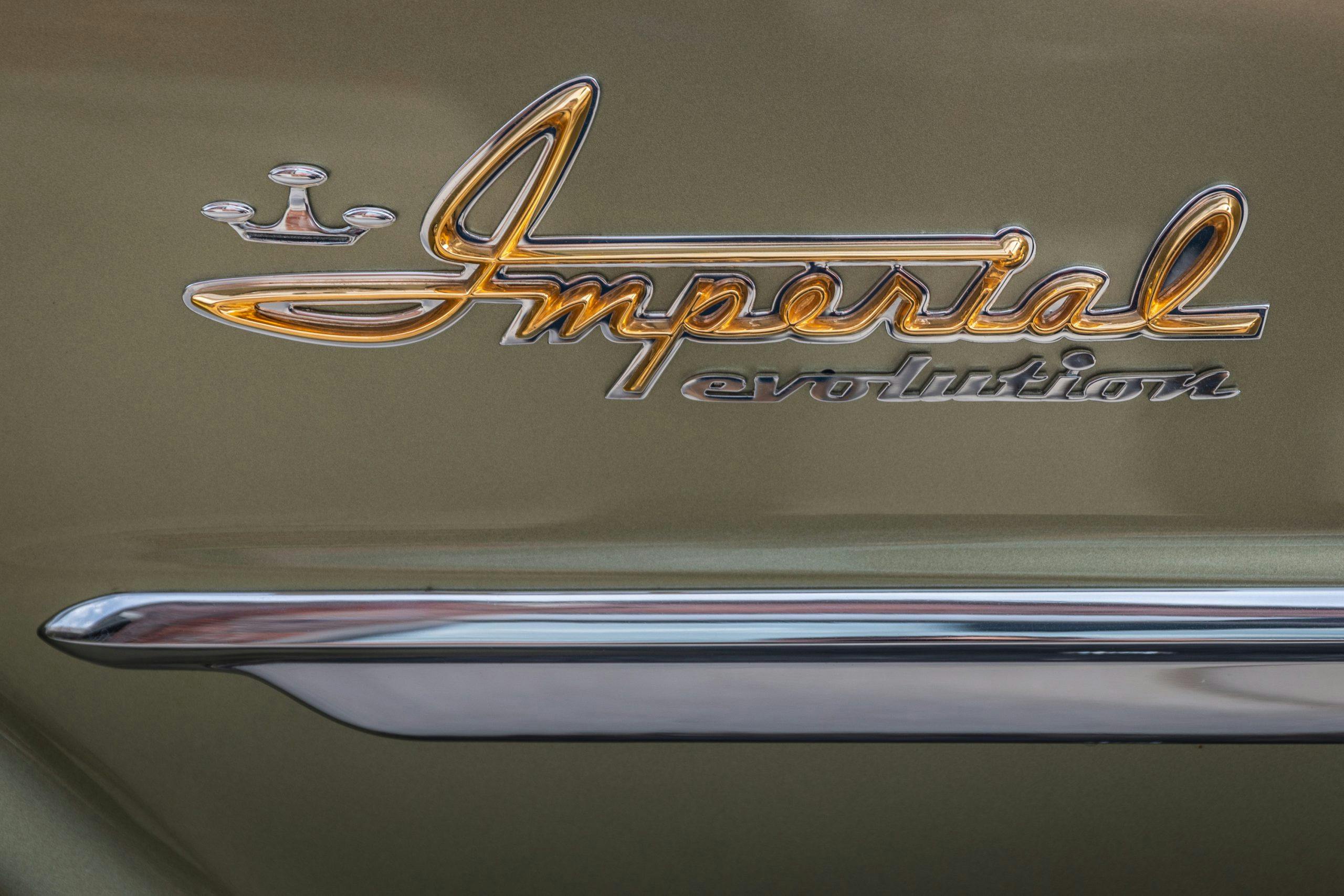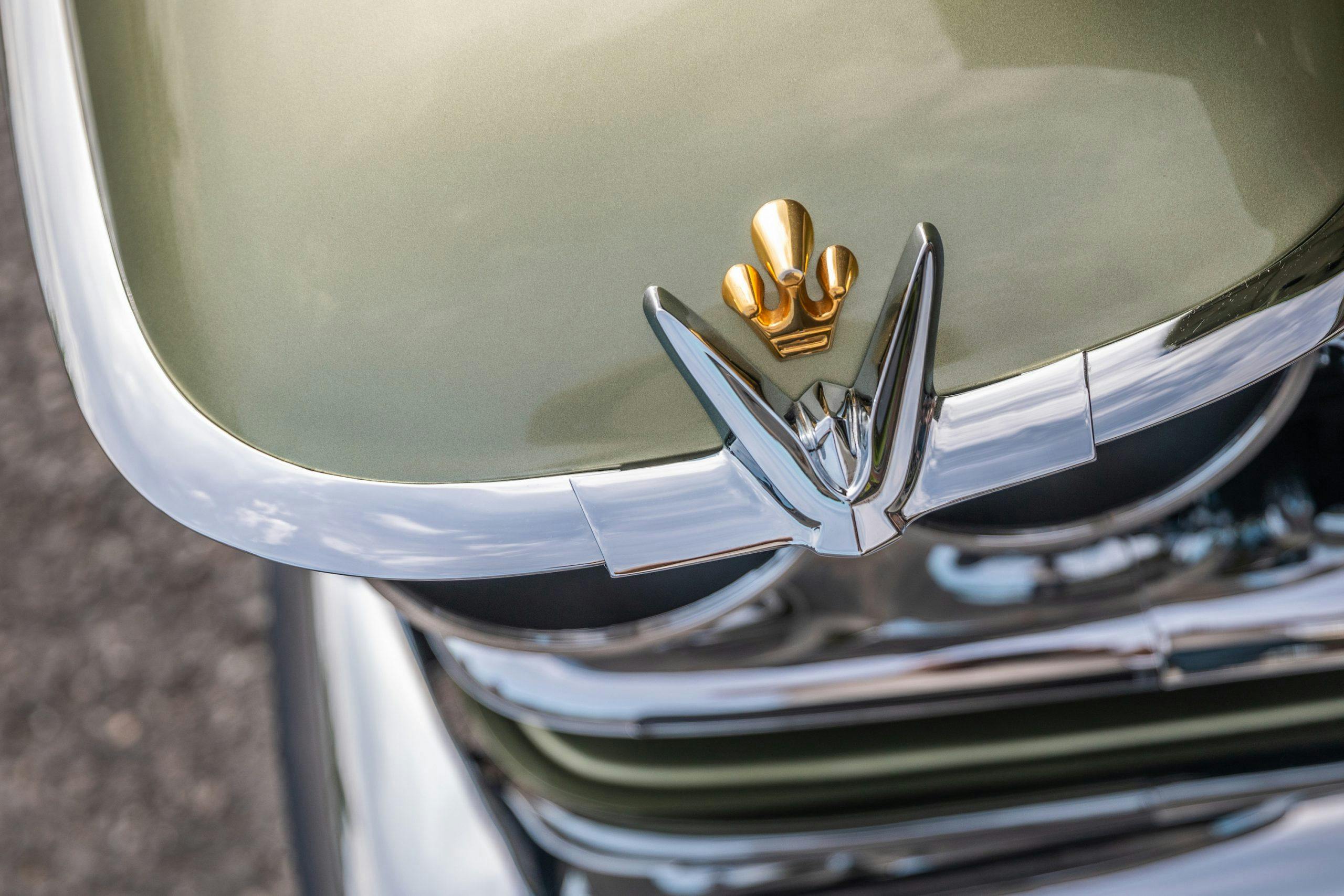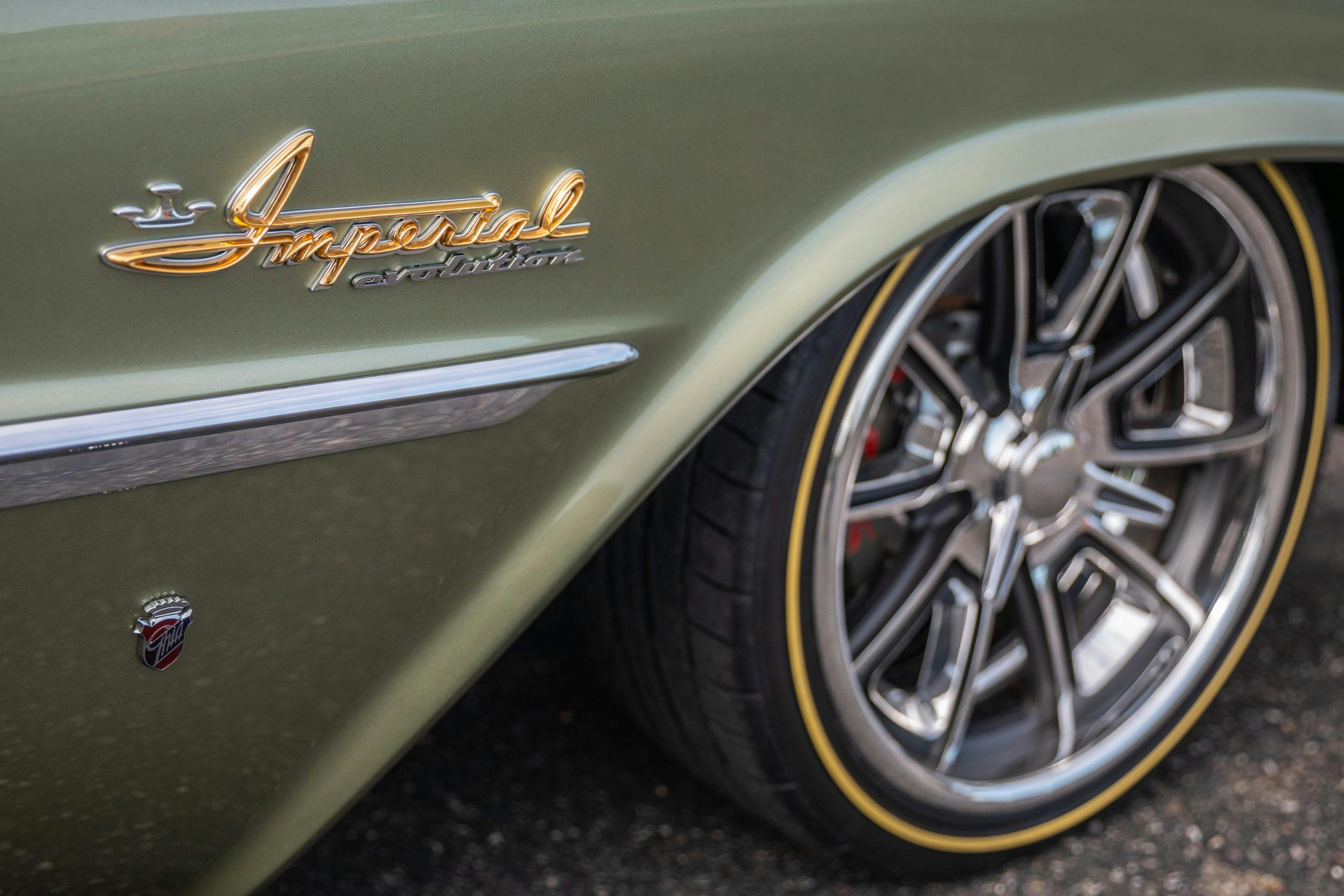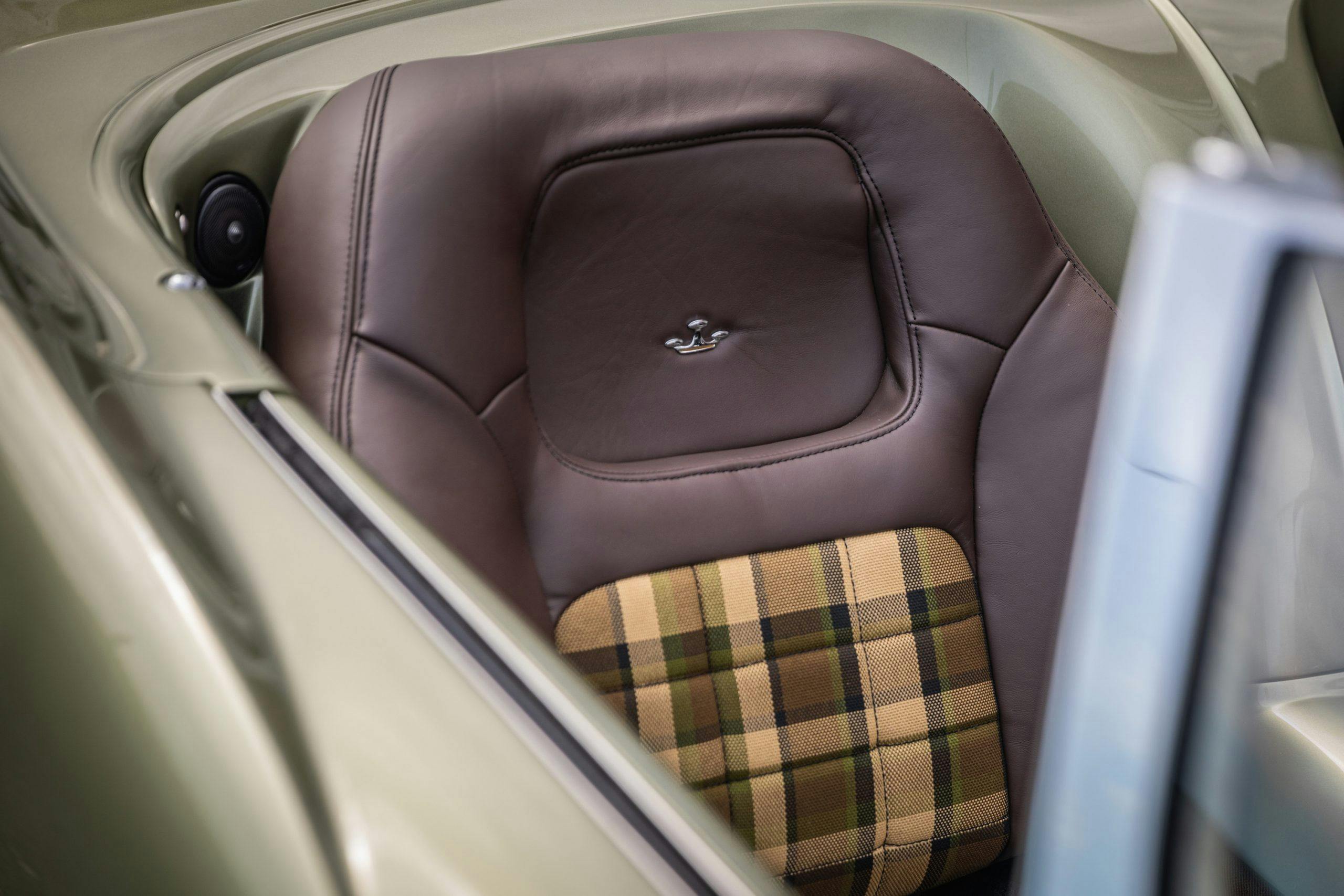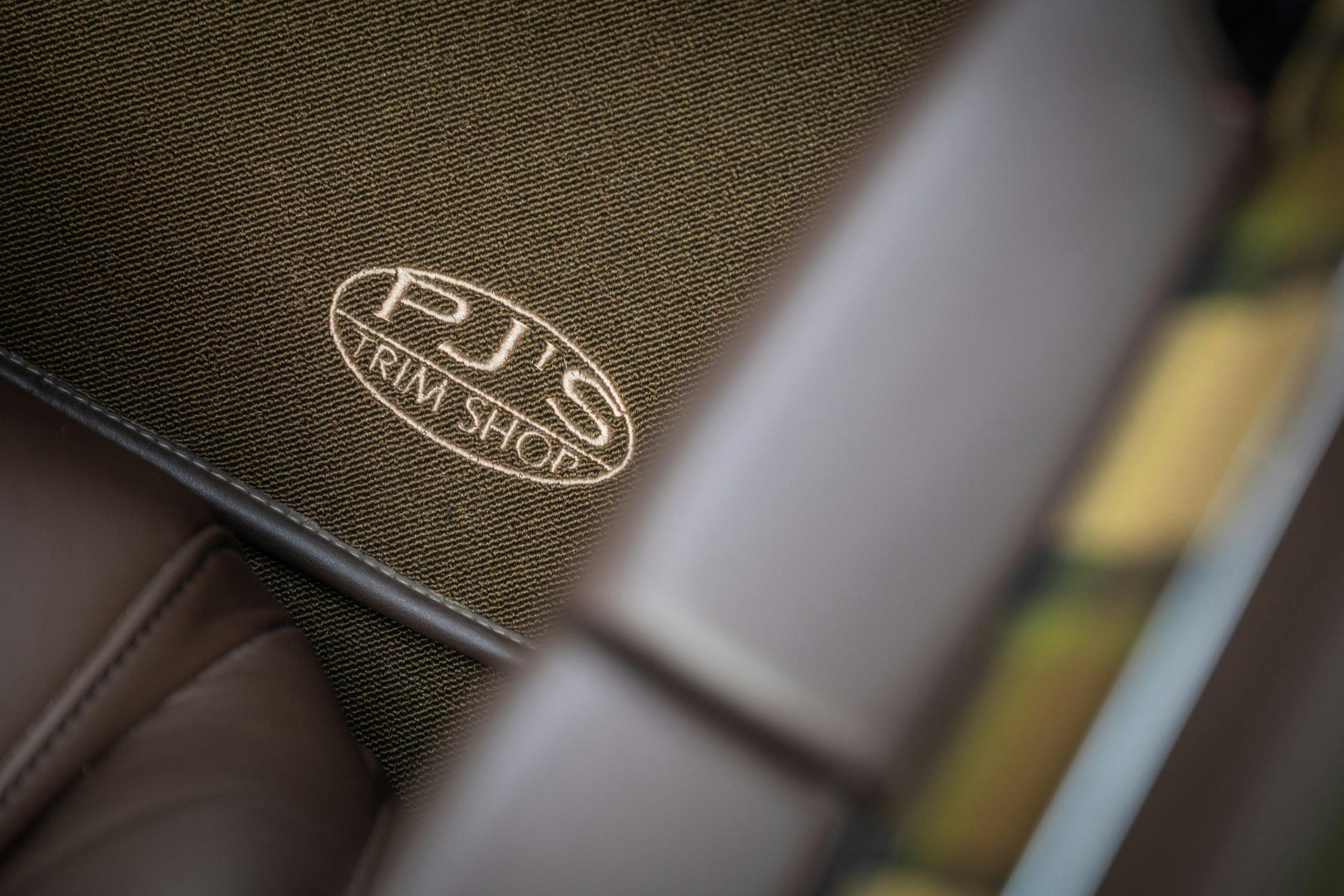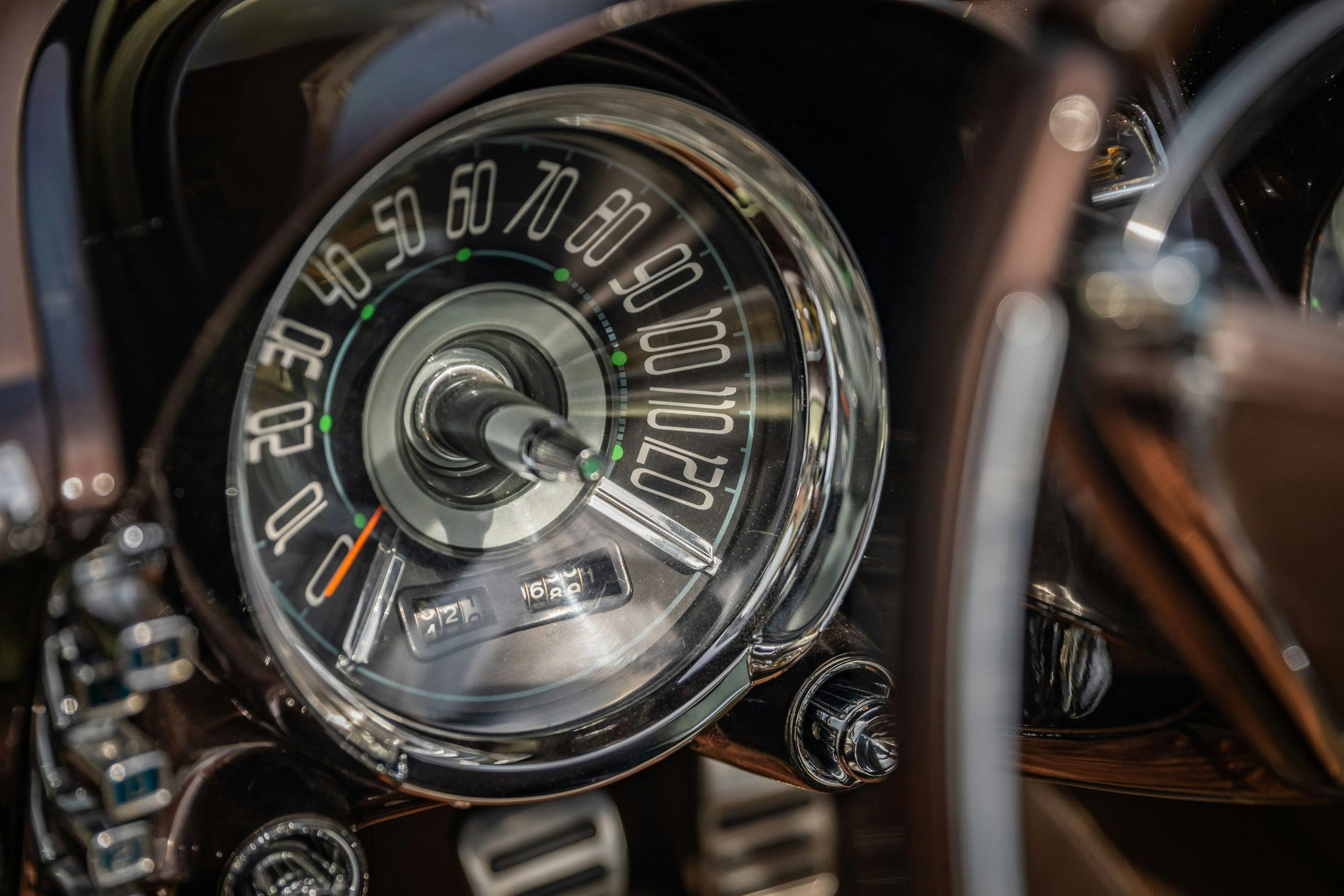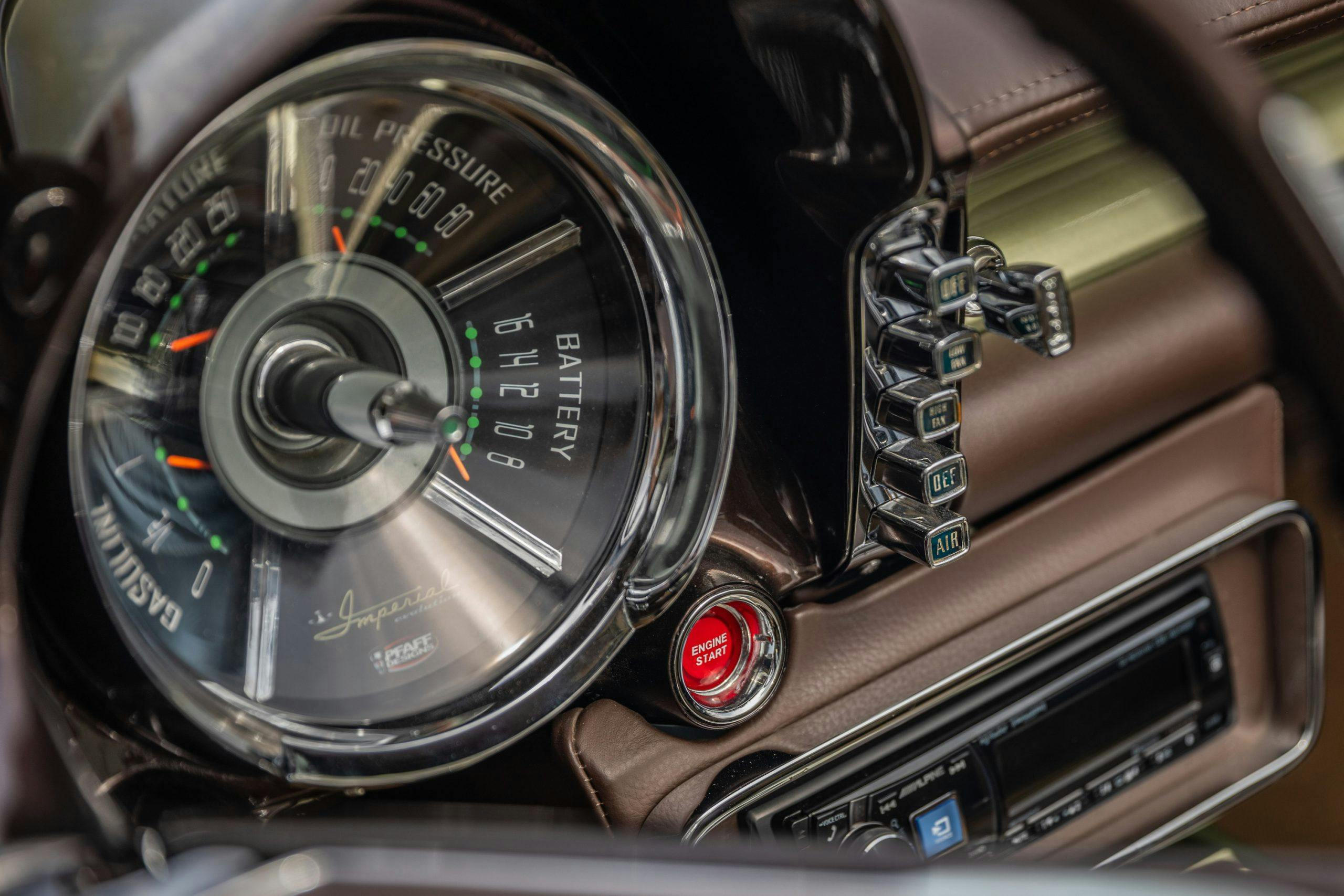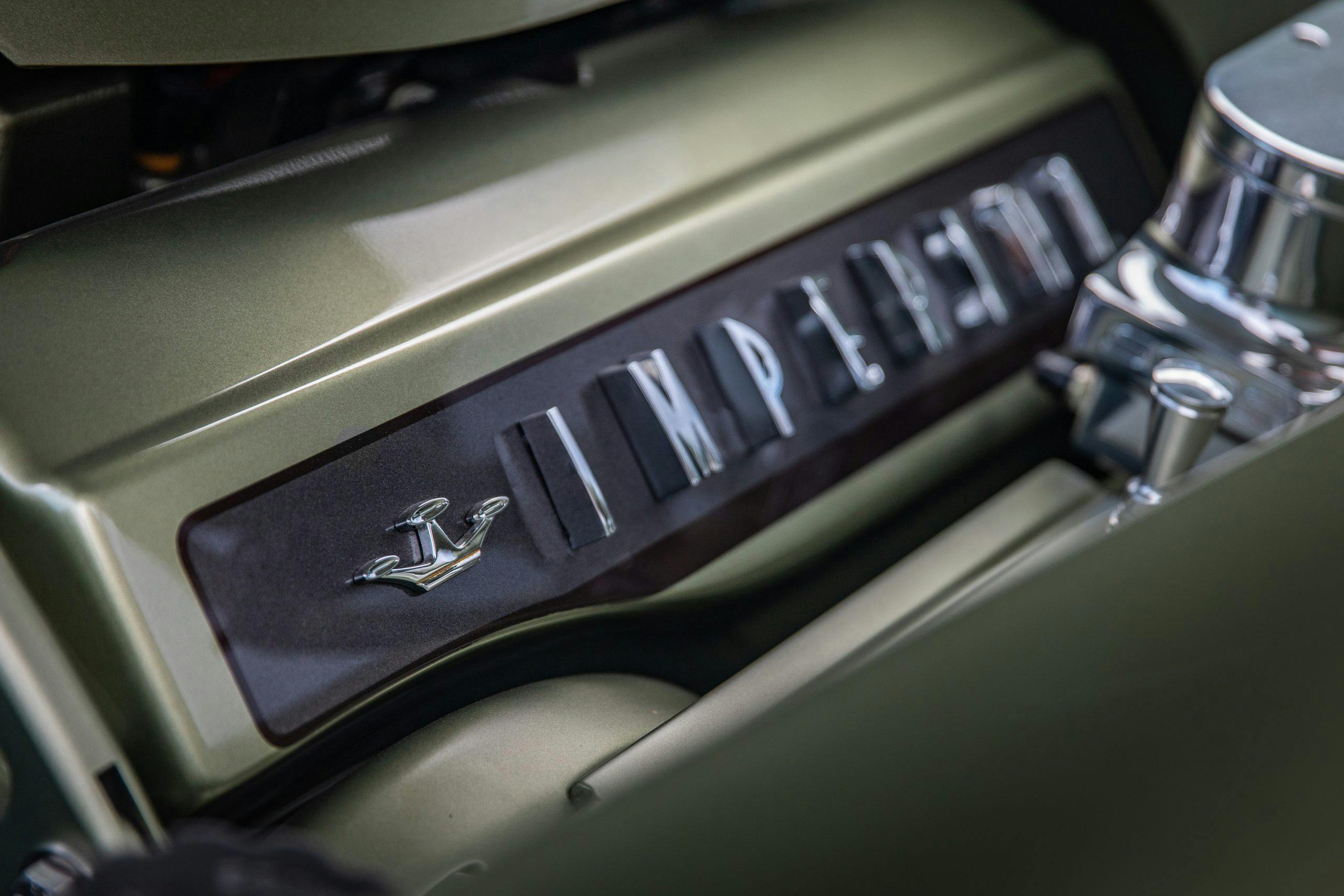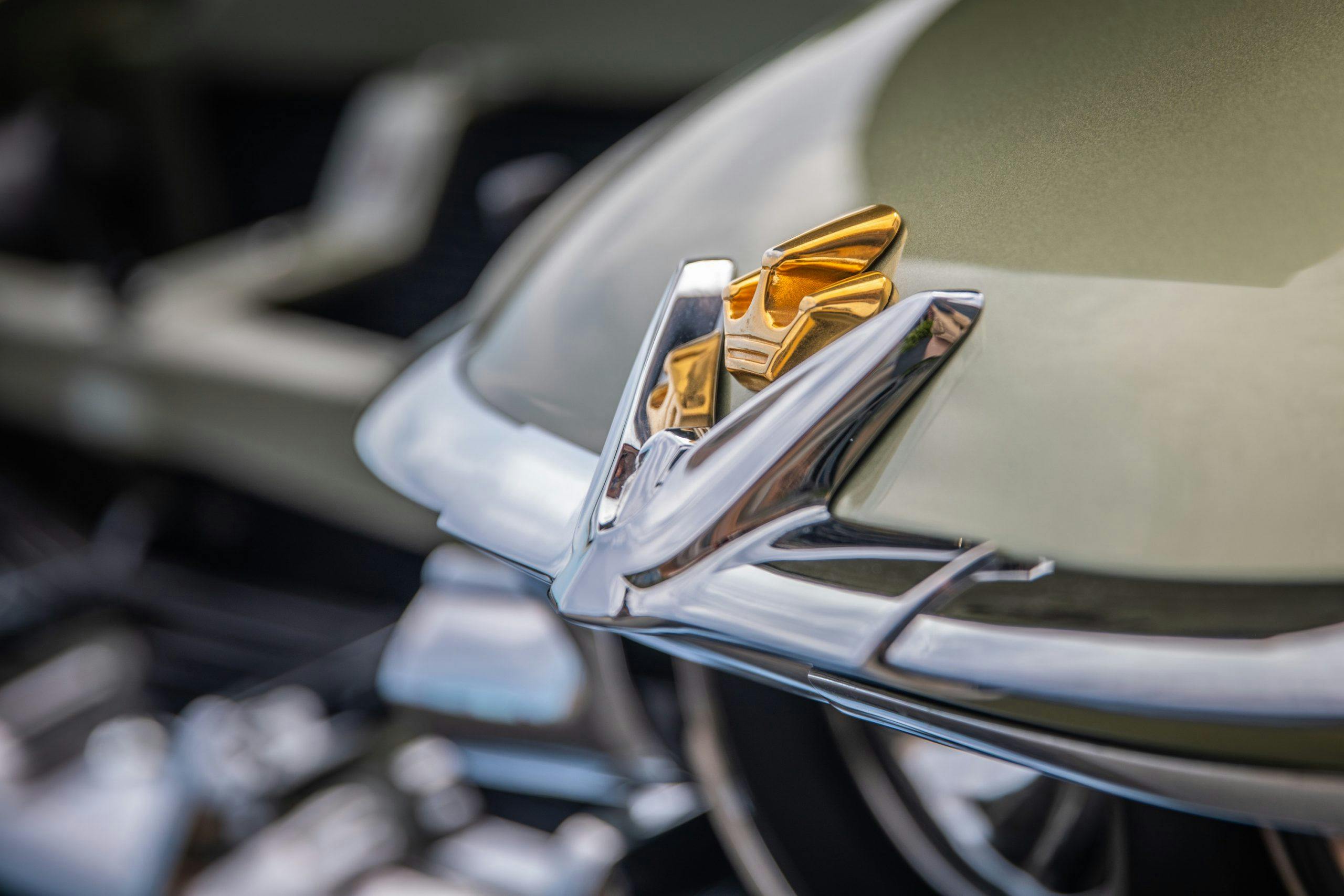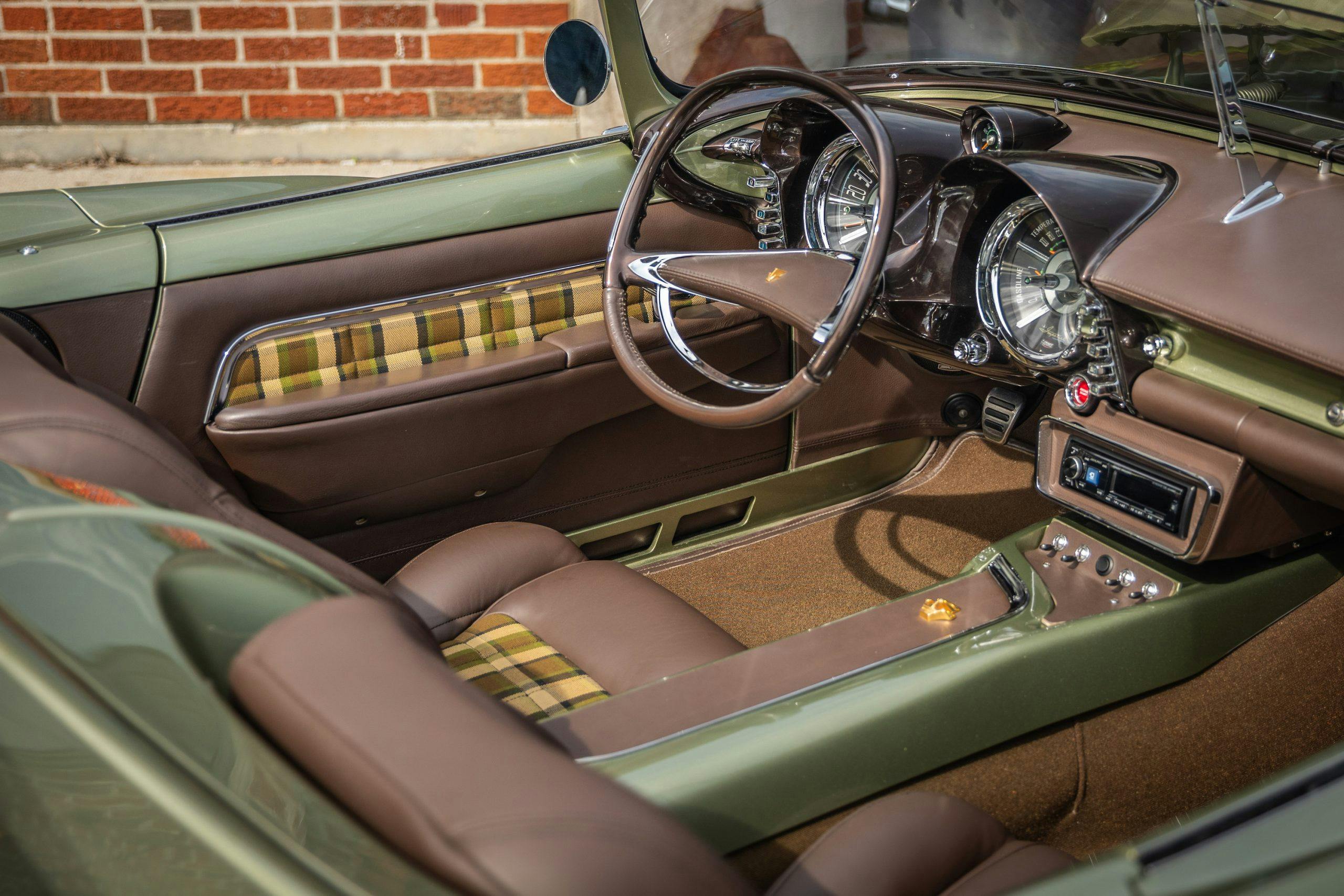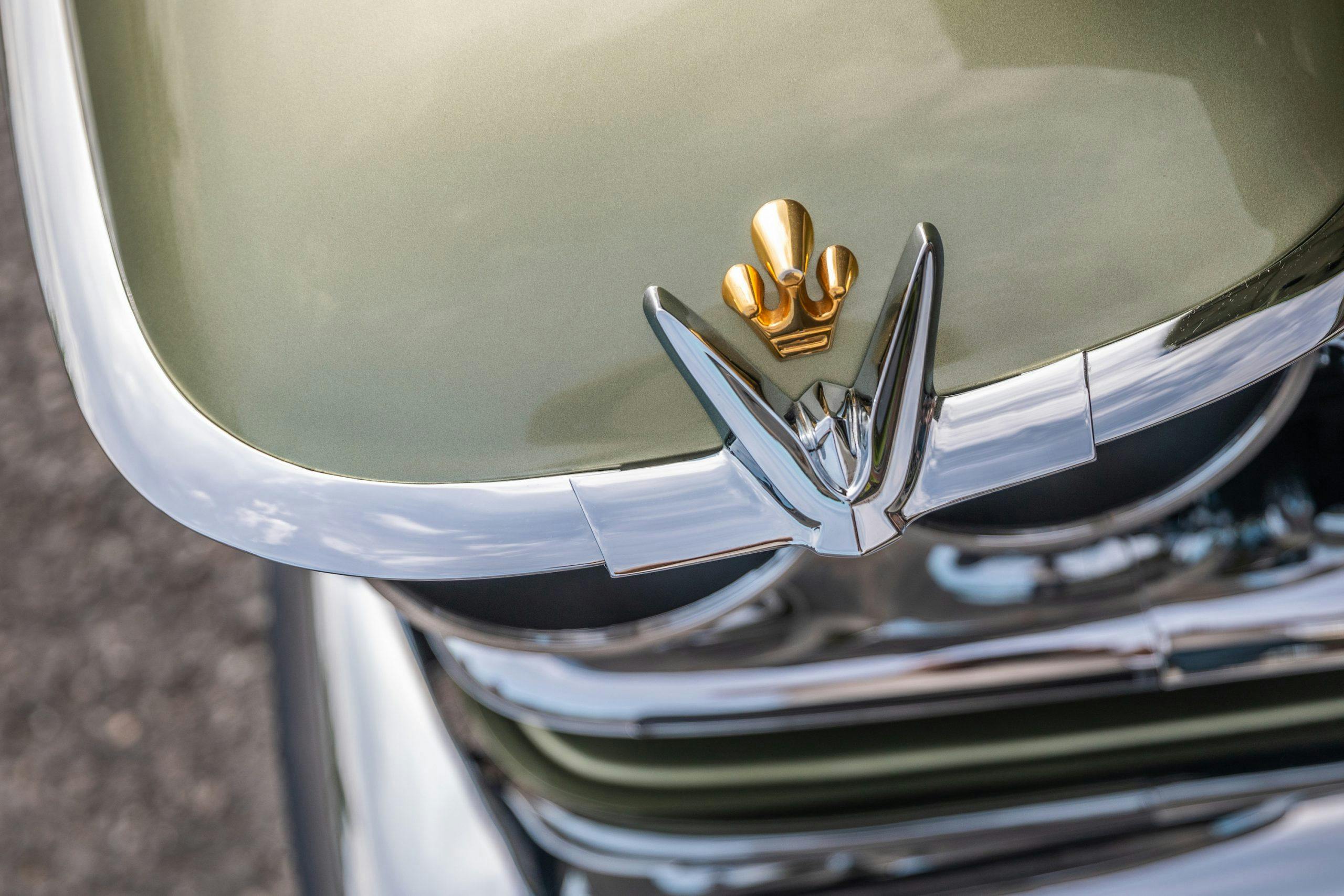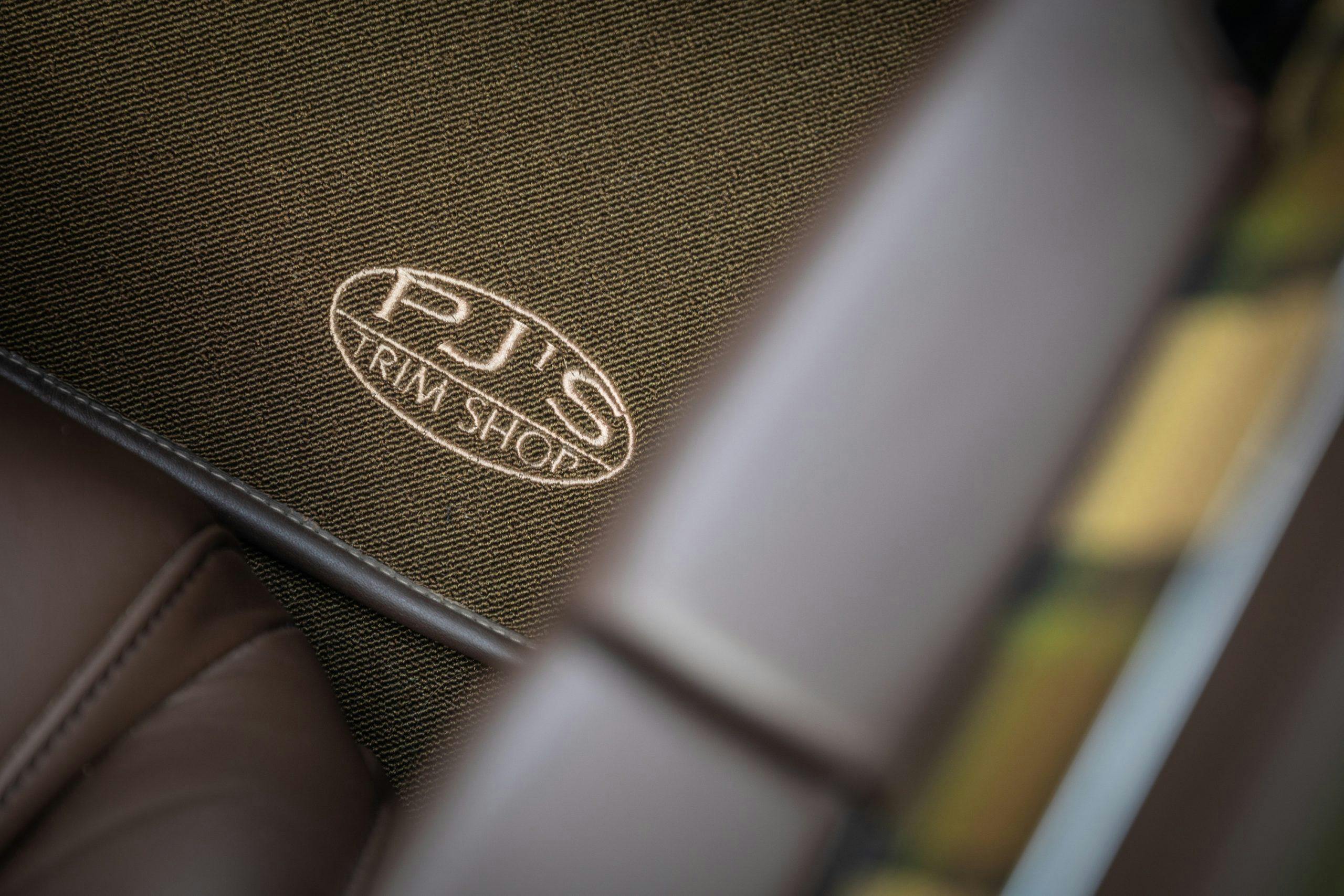Media | Articles
Murray Pfaff’s ’59 Imperial Speedster is the Mopar moonshot that never was
In the fab ‘50s, when GM and Ford blessed America with tantalizing two-seaters, Chrysler failed to rise to that challenge. Who says that misstep can’t be fixed, no matter how many decades have passed? Certainly not Murray Pfaff, Royal Oak, Michigan’s most creative and industrious automotive imagineer with some 300 car, truck, and motorcycle designs to his credit.
During one of his many daydream moments, Pfaff decided to design and build the Chrysler sports car that always should have been. His father helped locate the perfect donor car—a 1959 Imperial Crown four-door that had been slumbering for 35 years in an upstate New York barn. After it was transported to Michigan in 2007, the conversion work began in Pfaff’s 2.5-car suburban garage.
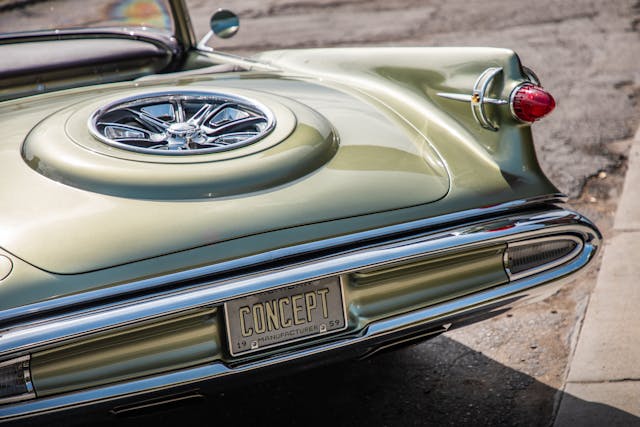
When it comes to hands-on skills—wrenching, welding, hammer-wielding—Pfaff is more apprentice than an expert. Luckily, his cadre of close friends filled in those gaps. Ten of them showed up on evenings and weekends for four years to invest a documented 10,000 man-hours, converting artistic renderings into a unique sports car. Without shorting his day job, Pfaff put in 60 hours a week in the garage.
Welding the bare Imperial body to a telescoping three-axis jig made of square-section steel tubing (before the hacking began) was an inspired stroke suggested by a colleague. This jig and numerous stabilizing struts kept the pieces properly aligned throughout the chopping process. Pfaff’s ultimate vision for his Imperial Speedster was to compress the land yacht into a sports car with the svelte proportions of a Shelby Cobra.

Another sage move: preserving every Forward Look feature that Virgil Exner gave the Imperial at birth. Exner joins Harley Earl and Bill Mitchell in the pantheon of brilliant designers, having created enduring classics for Pontiac, Studebaker, Lincoln, and even Volkswagen (the Karmann Ghia 2+2). Exner’s original soaring tail fins, sparkling grille teeth, bright bumpers, and “sparrow strainer” taillamps are all reprised in Pfaff’s Speedster.
Marketplace
Buy and sell classics with confidence
Sawing the original body into 46 chunks and disposing of extraneous pieces shortened the overall length by 48 inches, width by 8 inches, and section height by 3 inches. Stock-length doors consist of the front two-thirds of the original front doors married to the rear third of the ’59 back doors. The decklid was cut into five separate pieces before reassembly. The wheelbase was chopped 38 inches (from 129 to 91 inches) and the finished body was channeled four inches over a new tubular frame supplied by Schwartz Performance. In keeping with classic speedster themes, the custom Lexan windshield constructed by Pro Glass has no top bar. Door latches are magnetic. Seats from a Toyota Celica GTS were upholstered with Rolls-Royce chocolate-brown leather. The Alpine sound system pumps 300 watts through five channels.
The new Schwartz Performance G-machine chassis includes a control-arm front suspension, Ridetech coil-over dampers, power rack-and-pinion steering, and a 2009 Viper independent rear suspension and differential. Up front, a 2009 6.1-liter Hemi V-8 rams 425 horsepower through a modified four-speed Chrysler automatic transmission. Stainless steel exhaust pipes feed Flowmaster mufflers. A four-piston Raybestos monobloc brake caliper grips a slotted brake rotor at each corner.
Paint, chrome plating, and interior trim are the only details Pfaff farmed out to others. The new two-dial instrument cluster and push-button shifter were pirated from a 1960 Chrysler and the chic rectangular steering wheel came from a ’60 Imperial. The engine topper is a period-appropriate flight of fancy. More than 100 hours were invested in the construction of custom valve covers. The 17 crown insignia sprinkled around the car are plated with 24-karat gold. Paint was applied at PPG’s Technical Training Center in Wixom, Michigan.

The completed Speedster debuted in 2011 at the 59th Detroit Autorama to kick off a whirlwind show tour with trophies earned at most stops. Notable wins include the Mothers Choice Award at SEMA, the Go For Gold award in Tulsa, Oklahoma, and an outstanding engineering award at the 2012 Autorama. The Speedster has lapped the Indianapolis oval, participated in two Hot Rod Power Tours, and competed at drag strips and in slalom events. It wowed the crowds at the Playboy Mansion in Beverly Hills and at Detroit’s Eyes on Design concours.
In 2018, after 7000 miles on the road, Pfaff decided some freshening was in order. The rolled and pleated interior trim was replaced with more contemporary plaid cloth stitched by Shawn Paul at SPC Interiors. Instrument faces sporting a new Pfaff-designed font were produced by CON2R. The exterior finish went from champagne and orange to a PPG Envirobase candy-pearl color dubbed Evolution Green by the owner. The Daytona wire wheels were replaced with Schott Throttle billet-aluminum knock-off wheels. New 18- and 19-inch Nitto goldline radials came from Diamond Back Classics.
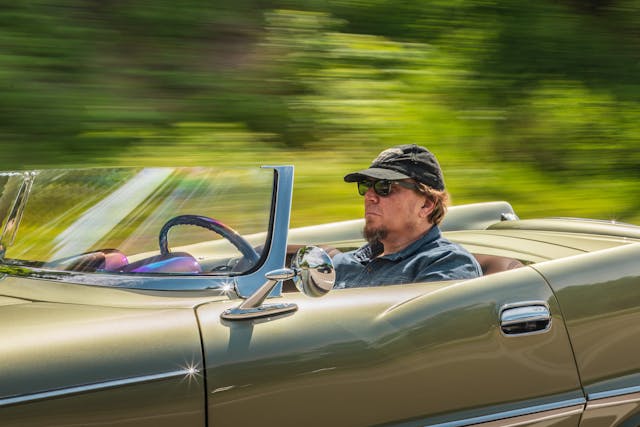
To fund his next project (or two), Pfaff is now willing to pass the Speedster on to its next caretaker. Without revealing exactly how much it would take for him to relinquish his dream machine, Pfaff notes that you can put a figure on a to-build cost for a car that took so much labor to create, and that he has had a couple offers north of $200,000 that almost hit the mark.
During a chance meeting with the car, Virgil Exner, Jr., who spent twenty years at Ford Design, offered this heartfelt endorsement: “I know my father would have loved the Imperial Speedster. Murray Pfaff’s creation is beautiful, well-thought out, and very nicely presented.”
The Imperial Speedster is truly a one-of-a-kind custom hot rod—a Forward Look beauty that pays respect to the past and reimagines it with masterful detail for the present.








